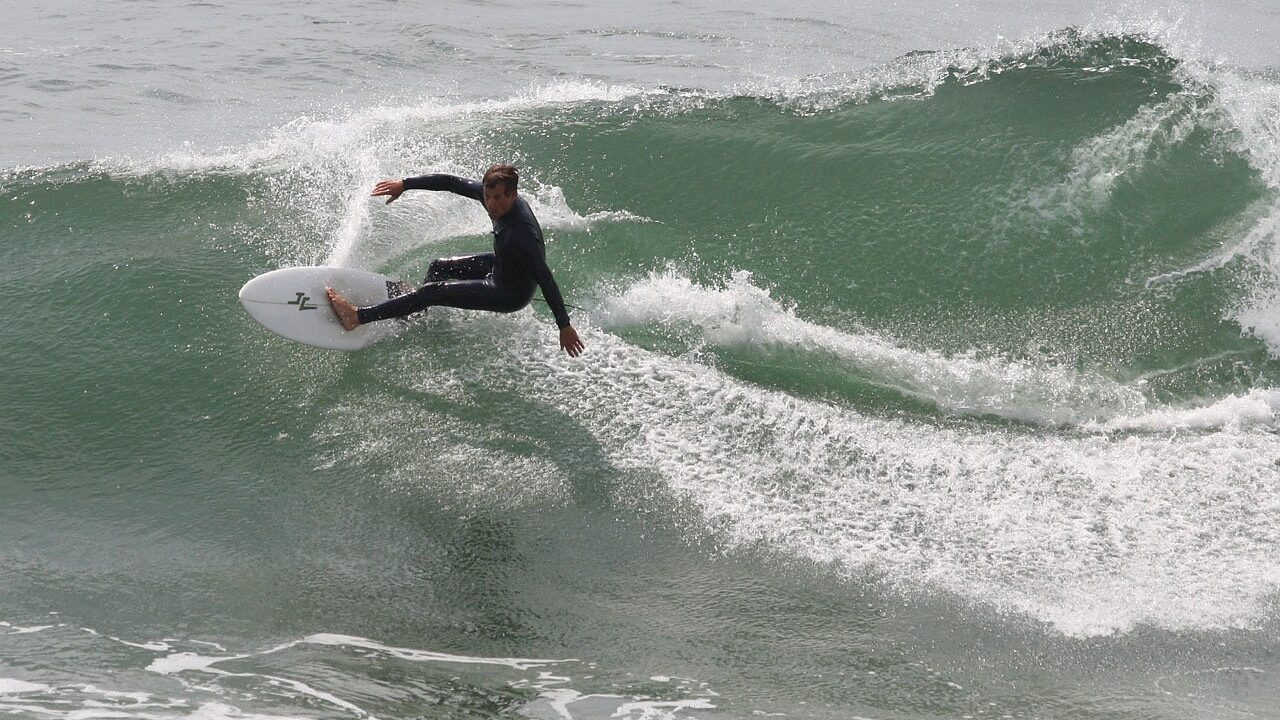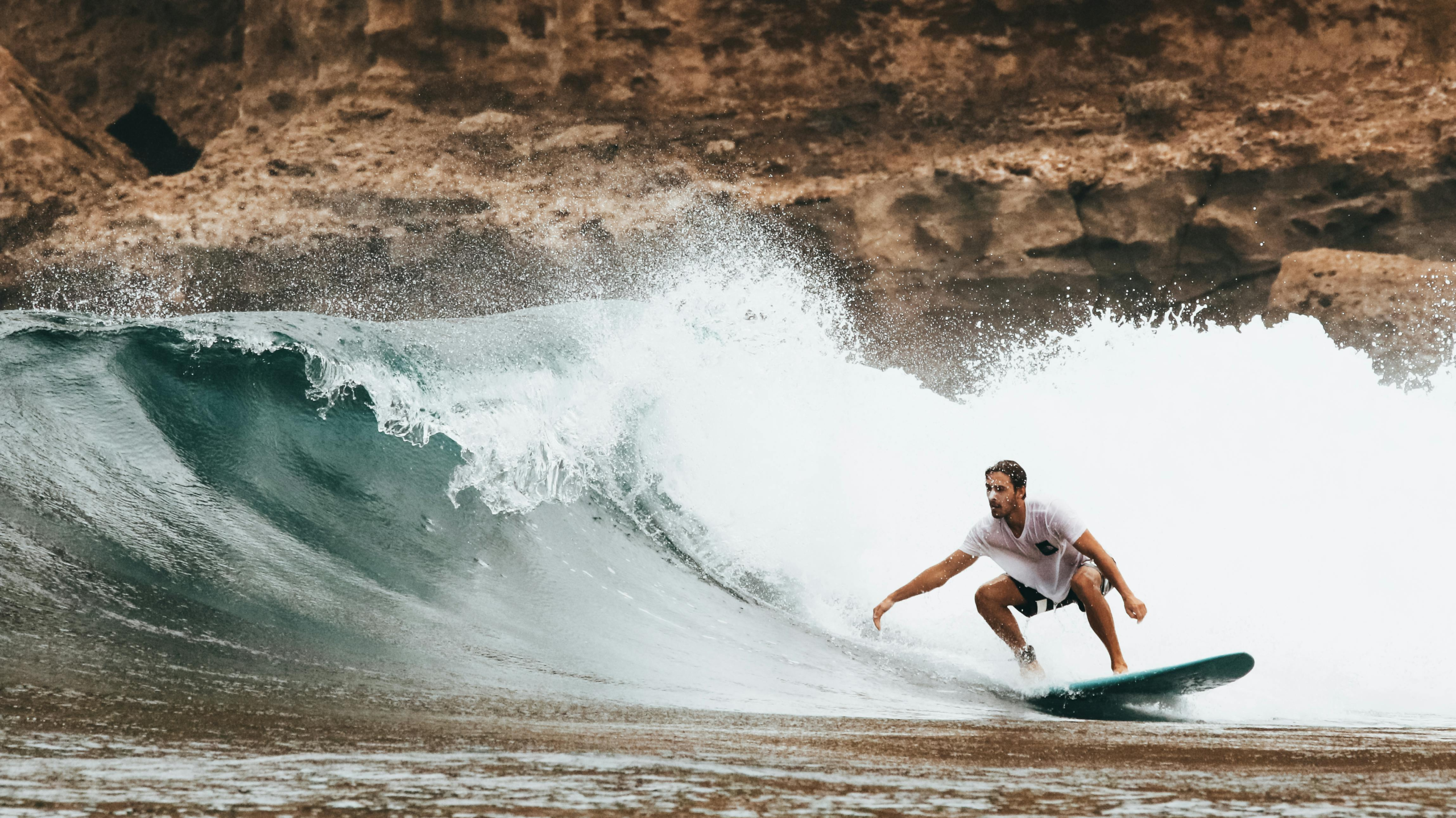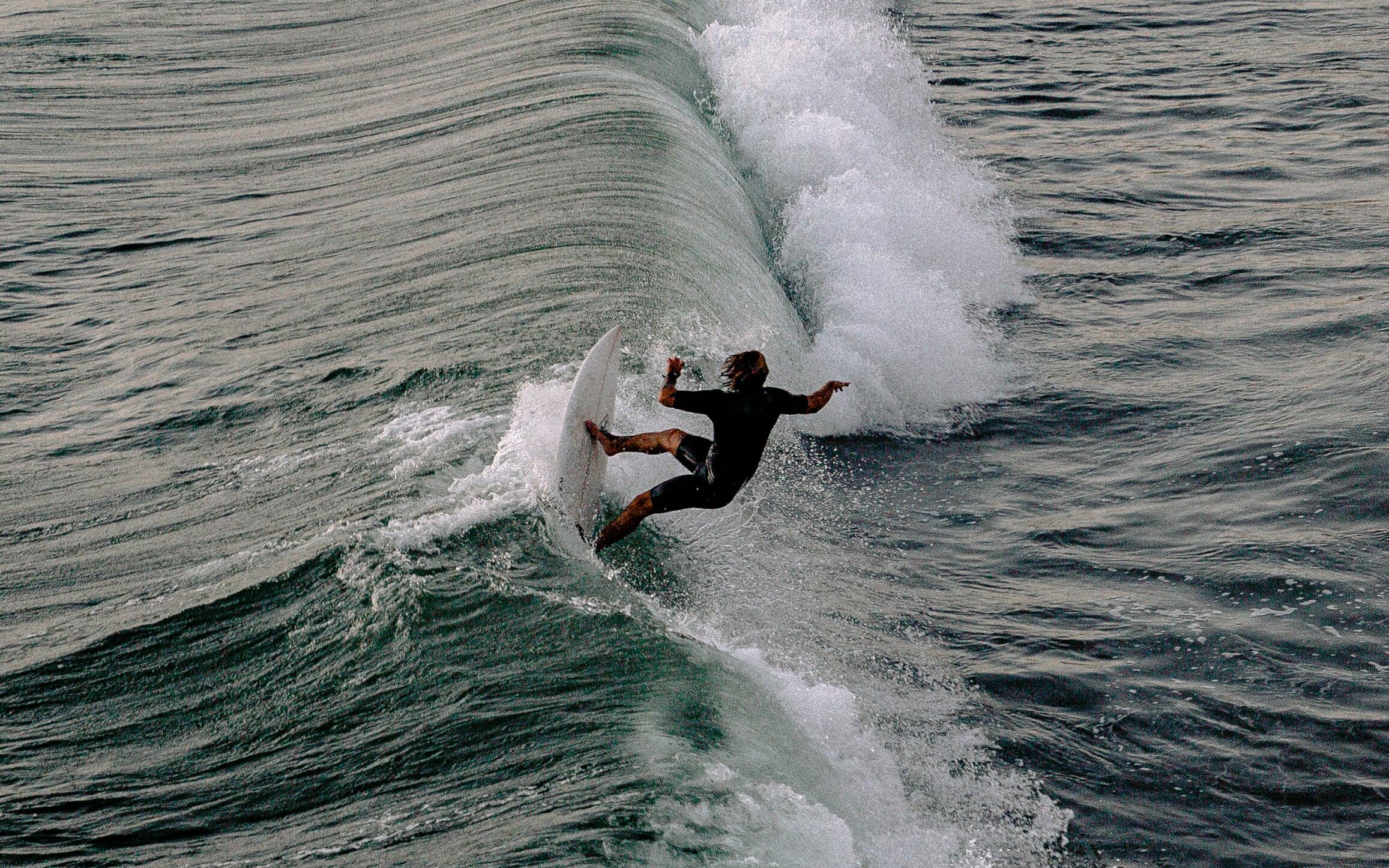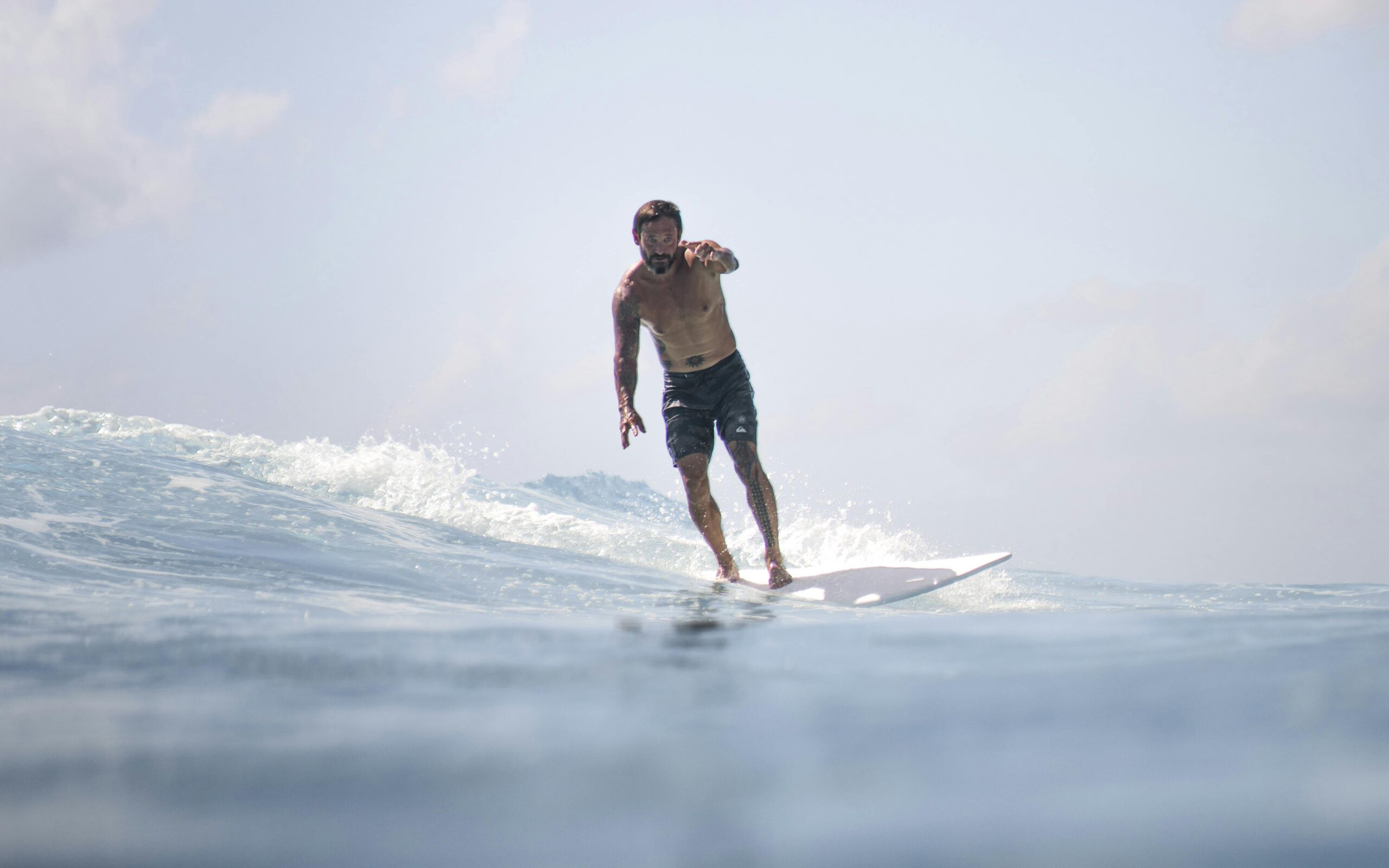
Table of Contents
Hey there, fellow wave enthusiasts! If you’ve ever watched seasoned surfers effortlessly glide across the water, you know there’s something almost magical about the way they navigate those waves. But fear not, my friends, because today, we’re diving headfirst into one of the fundamental skills every aspiring surfer needs to master: turning on a surfboard.
Picture this: you’re out on the water, feeling the sun on your face and the ocean beneath you. You’ve caught a wave and now it’s time to steer your trusty board in the direction you want to go. Sounds simple, right? Well, it can be, with the right technique and a little bit of practice.
In this guide, we’re going to break down the art of turning on a surfboard step by step, so you can feel confident and in control every time you hit the waves. From understanding the basics of weight distribution to mastering the subtle movements of your heels and toes, we’ll cover everything you need to know to make those turns smooth and seamless.
1. The Basics of How To Turn On a Surfboard
Alright, let’s get down to the nitty-gritty of turning on your surfboard. Now, you might be wondering, “What’s the big deal? Can’t I just lean in the direction I want to go?” Well, it’s a bit more nuanced than that, but don’t worry, I’ve got your back.
First things first, let’s talk about the basics of turning. When you’re out on the water, controlling your board’s direction comes down to one key principle: weight distribution. Think of your surfboard as a finely-tuned instrument, and your body as the conductor. By shifting your weight strategically, you can guide your board exactly where you want it to go.
Now, here’s the scoop on weight distribution: the center of your board is like the fulcrum of a seesaw. If you lean too far forward, you’ll nose-dive into the water. Lean too far back, and you’ll catch the dreaded “rail” and wipe out faster than you can say “hang ten.”
So, the goal is to keep your weight centered and balanced, with your knees slightly bent to absorb the motion of the waves. This stable stance sets the stage for smooth and controlled turns, allowing you to maneuver with precision and grace.

2. Preparing Your Surfboard
Alright, now that we’ve got the basics down, let’s talk about getting your surfboard ready for action. Think of it like prepping your trusty steed before a big adventure – you want to make sure everything’s in tip-top shape for a smooth ride.
First things first, let’s talk about positioning. When you’re getting ready to catch some waves, you want to make sure you’re in the sweet spot on your board. That means finding the center of gravity and planting yourself firmly in the middle. Imagine a tightrope walker balancing on a wire – you want to be centered and stable, ready to take on whatever the ocean throws your way.
Next up, let’s talk about your knees. Now, I know what you’re thinking – what do my knees have to do with surfing? Well, turns out, they’re pretty important. Keeping your knees slightly bent helps you absorb the motion of the waves and maintain your balance. It’s like having shock absorbers built right into your body, making those bumpy rides a whole lot smoother.
Now, let’s talk footwork. When you’re on your surfboard, your feet are your best friends. They’re your connection to the board and the key to controlling your movements. So, take a moment to make sure your feet are positioned just right. Your front foot should be near the center of the board, with your toes pointing slightly forward. Your back foot can be a bit further back, with your toes angled slightly towards the tail of the board.
And last but not least, let’s talk about your stance. When you’re out on the water, you want to strike a balance between being relaxed and being ready for action. Think of it like riding a bike – you want to be loose and fluid, but always prepared to react quickly if the need arises. So, find a stance that feels comfortable and natural, with your weight evenly distributed and your body relaxed.
3. Turning on a Surfboard Using Heels and Toes
Alright, my fellow wave riders, it’s time to dive into the nitty-gritty of turning on your surfboard using your heels and toes. This is where the magic happens – where you go from simply riding the waves to carving them up like a seasoned pro.
So, picture yourself out on the water, riding a wave with the wind in your hair and the sun on your face. You’ve found your balance, you’ve got your stance locked in, and now it’s time to start making some moves. But how do you actually turn on a surfboard? Well, it all comes down to your heels and toes.
Let’s break it down step by step. Say you want to turn left. What do you do? Simple – you apply pressure to your right heel while lifting your left toes slightly. This shifts your weight and redirects the board in the direction you want to go. It’s like steering a ship – you’re using subtle movements to guide your course through the waves.
Now, what if you want to turn right? You guessed it – you do the opposite. Apply pressure to your left heel while lifting your right toes. This shifts your weight in the opposite direction, causing the board to turn right. It’s all about balance and finesse, using the natural movement of your body to control the direction of your board.
But here’s the thing – turning on a surfboard isn’t just about shifting your weight from side to side. It’s also about where you look. Your gaze plays a crucial role in steering your board, so make sure you’re looking in the direction you want to go. It’s like driving a car – you’re always looking ahead to anticipate the next turn.
So there you have it – the secret to turning on a surfboard using your heels and toes. With a little practice and a whole lot of stoke, you’ll be carving up the waves like a pro in no time. So get out there, experiment with different techniques, and above all, have fun!

4. Where to Look While Turning on a Surfboard
Alright, wave warriors, let’s talk about the often-overlooked secret sauce of surfing: where to look. You might think surfing is all about feeling the waves beneath you and reacting on instinct, and you wouldn’t be entirely wrong. But here’s the kicker – where you look can make all the difference between a smooth, graceful turn and an awkward wipeout.
Picture this: you’re out on the water, riding a wave like a pro. You’ve got your balance dialed in, you’re nailing those turns, and everything is going swimmingly. But then, out of nowhere, you catch a glimpse of something out of the corner of your eye – maybe it’s another surfer, maybe it’s a seagull, maybe it’s just a particularly gnarly wave. Suddenly, your focus shifts, your concentration wavers, and before you know it, you’re tumbling head over heels into the water.
So, where should you be looking? Well, the short answer is: wherever you want to go. Sounds simple, right? But here’s the thing – it’s not just about looking in the general direction of your intended path. It’s about visualizing your trajectory and committing to it with unwavering focus.
Let’s break it down. Say you’re getting ready to make a left turn. As you approach the wave, you want to keep your gaze fixed on the path you want to follow – think of it as tracing an invisible line in the water with your eyes. By maintaining a laser-sharp focus on your intended trajectory, you’ll be able to execute a smooth, controlled turn with pinpoint accuracy.
But here’s the real kicker – your eyes are more than just passive observers. They’re active participants in the surfing experience, constantly scanning the horizon for opportunities and obstacles. So as you’re making your turn, keep scanning the waves ahead, staying alert for any changes in the surf conditions or potential hazards in your path.
So there you have it – the importance of where to look while turning on a surfboard. By keeping your gaze fixed on your intended path and staying alert to your surroundings, you’ll be able to navigate the waves with confidence and finesse. So get out there, keep your eyes on the prize, and above all, enjoy the ride!

5. Practicing Your Turns on a Surfboard
Alright, surf squad, now that we’ve covered the basics of turning on a surfboard, it’s time to put theory into practice and get those wheels turning – or should I say, get those waves churning!
Practice makes perfect, they say, and surfing is no exception. So grab your board, wax up those rails, and let’s dive right in. But before you paddle out, let’s set some ground rules.
First things first, start small. I’m talking ankle-high waves, baby. No need to go chasing Mavericks just yet. Focus on mastering the basics – getting comfortable on your board, finding your balance, and executing those turns with finesse.
Next up, find yourself a nice, mellow stretch of beach with gentle, rolling waves. This is your playground, your training ground, your laboratory of surfology. Take your time, feel out the rhythm of the ocean, and don’t be afraid to take a few spills along the way. It’s all part of the learning process.
Now, let’s talk technique. As you paddle out, focus on your stance – feet shoulder-width apart, knees slightly bent, weight centered and balanced. Visualize your turns before you make them, like a choreographer mapping out a dance routine. And when the time comes to execute those turns, remember: it’s all in the hips. Use your body to initiate the movement, transferring your weight from heel to toe with fluid, graceful motions.
But here’s the thing – don’t get discouraged if you don’t nail it right away. Rome wasn’t built in a day, and neither are perfect surf turns. It takes time, patience, and a whole lot of persistence. So keep at it, keep practicing, and above all, keep having fun.
Conclusion
Hey there, fellow wave enthusiasts! If you’ve ever watched seasoned surfers glide across the water effortlessly, you know the magic of mastering wave navigation. Today, we’ve delved into a crucial skill for any surfer: turning on a surfboard.
Picture yourself out on the water, sun kissing your face, and the ocean beneath you. You catch a wave and now it’s time to steer your trusty board in the direction you want to go. Sounds simple, right? Well, with the right technique and practice, it can be.
From understanding weight distribution to mastering subtle movements, we’ve broken down the art of turning on a surfboard step by step. So whether you’re a beginner or a seasoned pro, this guide equips you with the tools to navigate the waves with confidence and finesse.
So grab your board, hit the waves, and let the ocean be your playground. Happy surfing!
